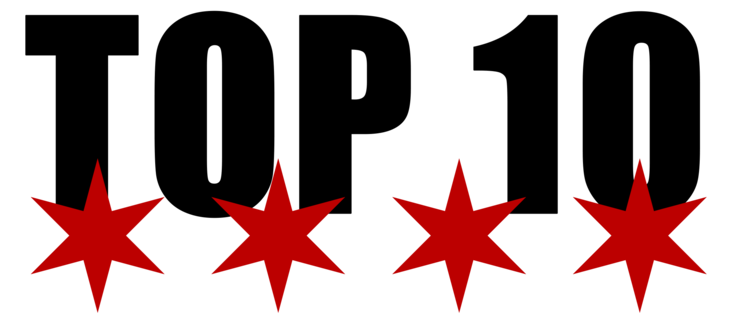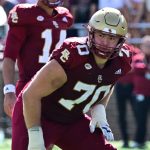Before we begin, it’s important to note that there is almost a 0% chance that the Nationals move top prospect Victor Robles. Robles is currently the seventh best prospect in baseball according to MLB Pipeline. With Bryce Harper poised to leave the team following the 2018 season, Robles is the future in Washington. Robertson is good, but he isn’t Victor Robles good.
Trade A
Nationals Receive: David Robertson, $12.5 million
White Sox Receive: Carter Kieboom, Wander Suero
This trade follows the same structure as the James Shields deal between the White Sox and Padres. The Padres received Fernando Tatis Jr and Erik Johnson while the White Sox added Shields.
Tatis was the crown jewel of the trade and ESPN’s Keith Law recently ranked him as the 47th best prospect in baseball. Johnson was a a young pitcher with potential during the deal, but after receiving Tommy John surgery is expected to miss the entire 2017 season.
Tatis is just 18 years old and has a long way to go before he reaches the MLB level. However he holds massive potential and could be the Padres impact shortstop of the future. It’s very unlikely that the Padres would’ve landed him without paying most of Shields contract. By taking on $10 million of his $21 million contract in 2017, the Padres were able to land a top prospect while giving the White Sox more financial flexibility.
This deal works under the same parameters. While $25 million isn’t a huge number, it is a lot for a team like the Nationals who could be active at the Trade Deadline. With the White Sox paying for half his contract, Washington has more payroll flexibility to add another impact player at the deadline, while adding their elite closer.
But by adding Robertson and help in the payroll, the Nationals have to give up a very good prospect in Carter Kieboom.
Kieboom is currently ranked as the Nationals third best prospect according to MLB Pipeline. The former Georgia High-Schooler was drafted in the first round of the 2016 MLB Draft. He went on to appear in 36 games, hitting .244 with four home runs and 25 RBIs.
Kieboom was described as one of the best prep hitters in the 2016 MLB Draft. He should be able to hit for a high average with solid power once he reaches the MLB. At just 19 he will need much more seasoning in the minor. However he has the makings of a legit MLB hitter and could realistically be the team’s third baseman of the future once Todd Frazier is moved.
Wander Suero fits the ‘Erik Johnson’ role of this trade. Suero has appeared in 154 games and 404.1 innings over his seven years in the minor leagues. The 25 year old holds a career 33-14 record with a 3.54 ERA and a 359/148 K/BB ratio.
This deal gets the Nationals the closer they covet plus additional payroll flexibility while the White Sox receive a very good prospect in Carter Kieboom and a pitcher with upside in Wander Suero.
Trade B
Nationals Receive: David Robertson
White Sox Receive: Andrew Stevenson or Pedro Severino
This trade would be the easiest of the three as it is a one for one swap between the two teams. While the Sox could realistically target any of the prospects in the Nationals top 10, Andrew Stevenson and Pedro Severino seem to make the most sense.
Stevenson is currently the Nationals fifth best prospect. The outfielder has appeared in 188 minor league games, hitting .285 with four home runs, 59 RBIs and 62 stolen bases.
Stevenson’s calling card is obviously his speed. Putting him in the same lineup as Charlie Tilson, Tim Anderson and even Yoan Moncada would give the White Sox one of the quickest lineups in the MLB. If he continues to hit for average there’s a chance he could turn into a poor man’s Billy Hamilton.
Severino is currently the team’s 11th best prospect, but he is sure to rise up the ranks when MLB Pipeline releases their new list. He has appeared in 18 MLB games hitting .313 with two home runs and four RBIs. Over his 421 minor league games, Severino hit .243 with 19 home runs, 153 RBIs and seven stolen bases.
Severino is arguably the best defensive catcher in the minor leagues. He will never be a 20+ home run hitter, but he will hit for average while blocking balls and throwing runners out from behind the plate. If Zack Collins doesn’t pan out as a catcher, Severino would be the best option. Defensively, playing Severino at catcher and Collins at first base may be what’s best for the White Sox.
Overall, an even one for one switch may be what’s best for both teams. The Nats get Robertson and the White Sox get yet another top 10 franchise prospect. In this case Andrew Stephenson or Pedro Severino make the most sense as potential targets.
Trade C
Nationals Receive: David Robertson
White Sox Receive: Jesus Luzardo and Osvaldo Abreu
Rather than receiving one “can’t miss” prospect, in Trade C the White Sox receive two up and comers. While players like Rafael Bautista and Blake Perkins provide impressive offense weapons, the team already has numerous outfield prospects, making their inclusion unnecessary.
Jesus Luzardo is currently the Nationals 13th best prospect. After undergoing Tommy John surgery, Luzardo slipped to the third round of the 2016 MLB Draft. He has a good three pitch mix with a fastball that consistently hit 93 MPH on the radar gun. The White Sox would be taking a chance by trading for a pitcher coming off of Tommy John, but Luzardo has all the tools to become a front-line starter once he matures.
Osvaldo Abreu is currently Washington’s 16th best prospect. In 410 minor league games, Abreu has hit .261 with 13 home runs, 164 RBIs and 96 RBIs. At 22, Abreu would need more seasoning in the minor leagues. However as his power and speed emerge, there’s a chance he could become a 20/20 player in the MLB. While his fit at third base would be questionable, he is a much more promising hitter than Nationals prospects Anderson Franco and Kelvin Gutierrez.
Players like Luzardo and Abreu aren’t going to draw as much hype as a Kieboom, Severino or Stephenson. They aren’t going to provide as immediate success as the three and it could be years before fans see either at the MLB level.
However they both are oozing with potential and could both become impact players in the big league upon their arrival. Making Trade C proves that Rick Hahn is ready to take the rebuild slow and develop his players. Jesus Luzardo and Osvaldo Abreu are certainly two prospects worth developing.
Overall, the Nationals continue to be the favorites to land David Robertson. Until the team commits to an in-house candidate or makes a move, Washington will seem like the most likely landing spot.
While GM Mike Rizzo could surely get more creative, using one of these three outlines is the best way for the Nationals to land the White Sox pitcher.
The Nationals need a closer, and the White Sox have a very talented one readily available. Hopefully the two teams are able to reach a deal with David Robertson heading to the Nation’s capital and young talent heads to the South Side.
Feel free to continue the conversation on Twitter: @DFappiano14












